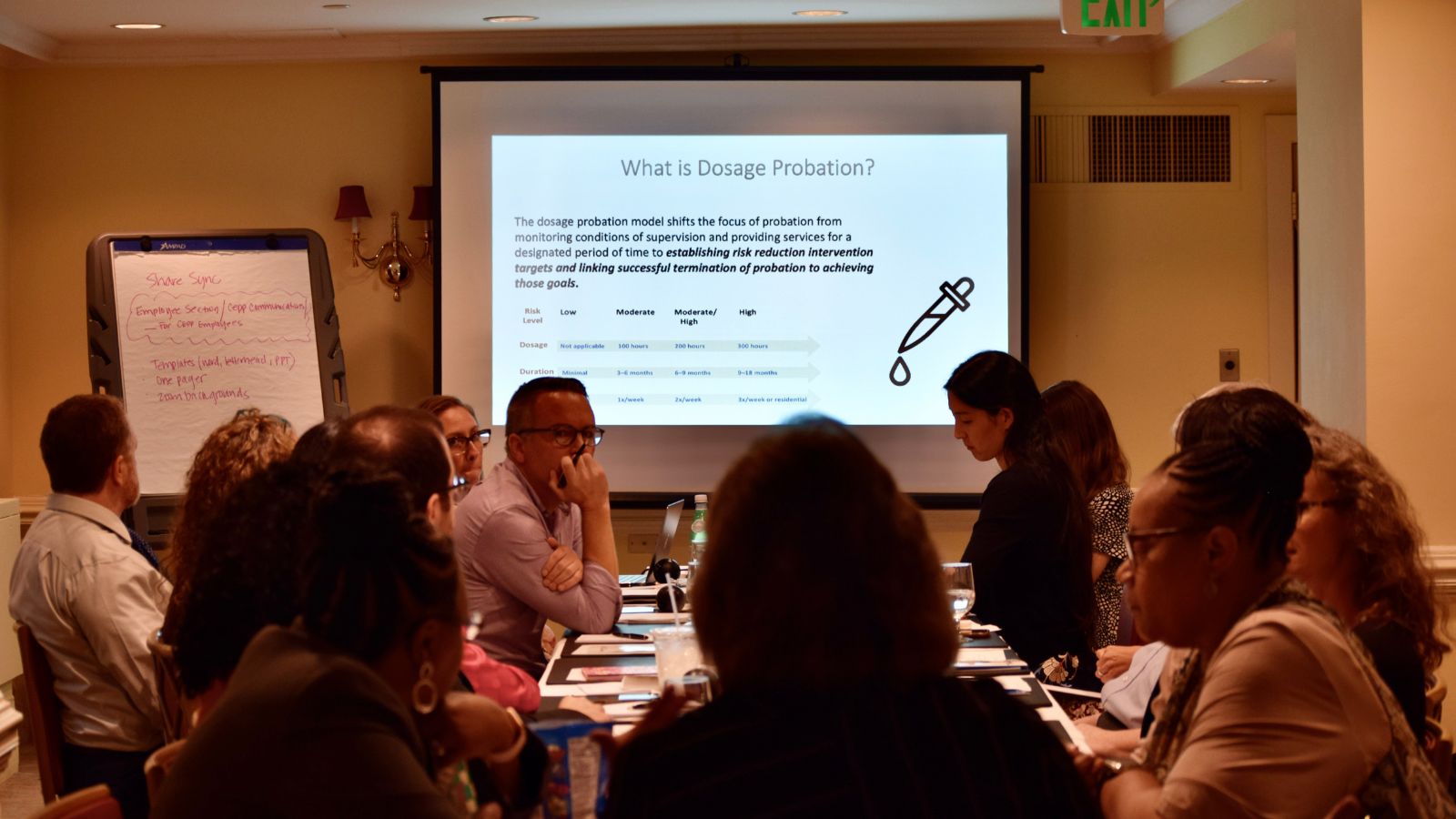Project
Dosage Probation

Overview
Dosage probation is an innovative and research-informed approach to sentencing and supervision. It incentivizes behavior change by providing people with an opportunity to earn early discharge if they successfully engage in evidence-based interventions tailored to their criminogenic needs in a “dose” matched to their assessed likelihood of recidivism.
Our Approach
The dosage probation model ties the length and successful termination of probation to the completion of the optimal amount and type of intervention that research demonstrates is necessary to increase people’s likelihood of success rather than relying on an approach largely based on compliance with conditions over a designated period.
This model was conceptualized in 2011 in collaboration with criminal justice system stakeholders in Milwaukee County, Wisconsin, under the Evidence-Based Decision Making (EBDM) initiative, sponsored by the National Institute of Corrections (NIC). Since then, CEPP and NIC have engaged in an ongoing partnership to further develop and pilot the dosage probation model.
In 2014, CEPP, in collaboration with The Carey Group (TCG) and the Milwaukee County circuit court judge, developed a conceptual dosage framework based on social science research; this framework was described in Dosage Probation: Rethinking the Structure of Probation Sentences. In 2019, following a pilot test at two sites, CEPP, in collaboration with TCG, developed the phases and steps necessary for the effective implementation of dosage and shared lessons learned through the publication Dosage Probation: A Prescription Based on Two Pilot Sites’ Experiences.
NIC has supported the implementation of the dosage model in several pilot sites—Napa County, California; Washington County, Minnesota; and, most recently, Dodge-Olmsted Counties and Wright County, Minnesota. CEPP, often in collaboration with its partners, assists each site in translating the research into practical strategies to achieve client engagement, building probation agent knowledge and skills, realigning the role of supervisors around coaching and mentoring, and developing practical tools (e.g., training curricula, policy manuals, etc.) designed to facilitate the transition from the traditional model of probation supervision to a person-specific model of probation incentivizing behavior change.
The Impact
The dosage probation model remains an innovative concept and is not yet fully tested. Under proof of concept, the pilot sites have demonstrated that:
- Justice system decision makers can embrace the approach
- Many people on probation demonstrate higher levels of motivation to engage in activities and referrals that help address their criminogenic needs
- Probation professionals concentrate their time on delivering and brokering evidence-based interventions according to people’s assessed likelihood of recidivism, criminogenic needs, and responsivity factors
- Treatment providers willingly undergo an independent evaluation of their services and modify their practices to more closely align with evidence-based practices
- Probation terms can be dramatically reduced
Further research is needed to determine the impact of the dosage probation model on other outcomes of interest, such as people’s post-supervision success.
Issue Area
Related Resources
Related Projects
A Case Study on the ...
The Center for Effective Public Policy (CEPP) convened a small group of criminal justice leaders to examine strategies for adopting evidence-based too...
Crime Prevention Thr...
CEPP is working with the Colorado Department of Public Safety on the Crime Prevention Through Safer Streets Grant Program, a new initiative to evaluat...





